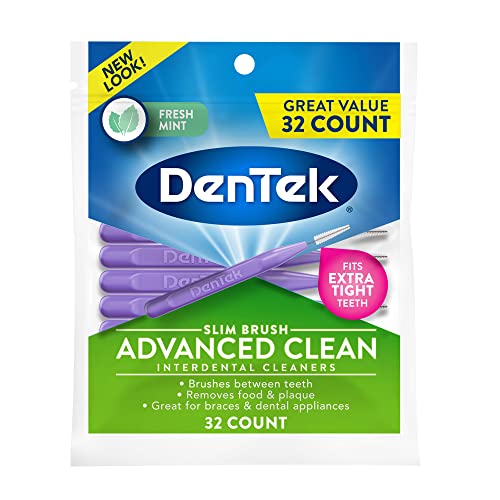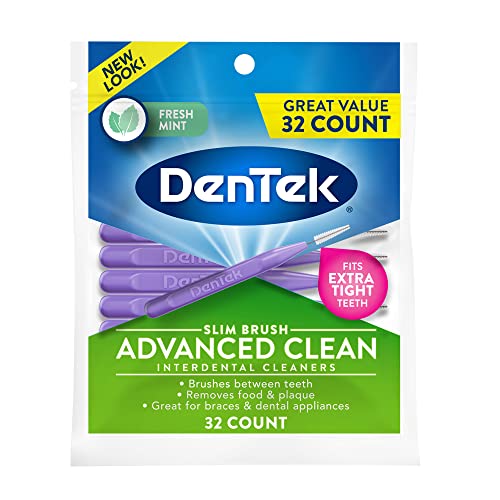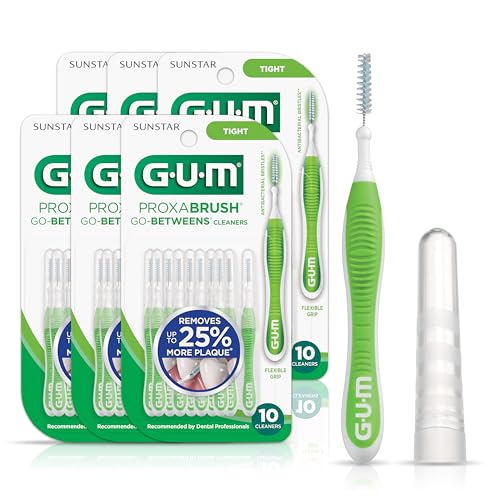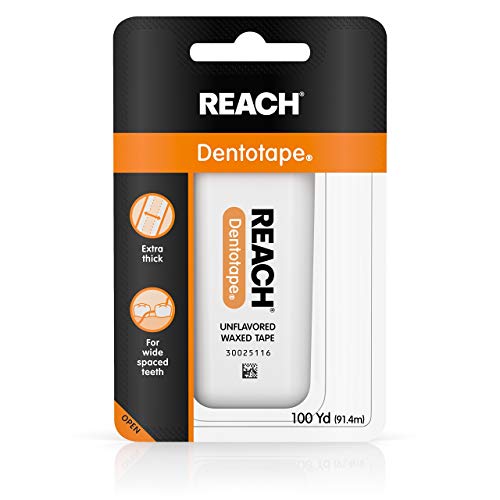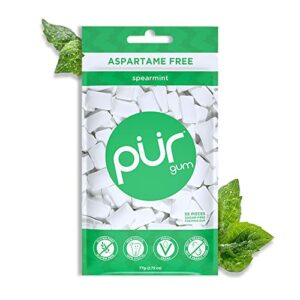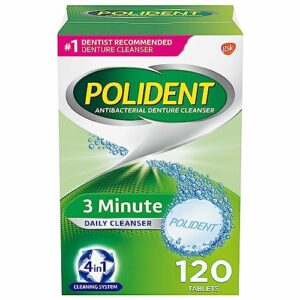In our step-by-step guide, we will show you how to incorporate interdental cleaning into your overall oral care routine. Interdental cleaning refers to the practice of cleaning the spaces between your teeth, which are often tricky to reach with a regular toothbrush. This guide is designed to help you understand the importance of interdental cleaning and provide you with clear and easy-to-follow steps to include it in your daily oral care routine. By following our guide, you will be able to maintain optimal oral health and prevent dental issues that can arise from neglecting these hard-to-reach areas.
Maintaining Oral Health Made Easier
Understand the Importance of Interdental Cleaning
Interdental cleaning is crucial for maintaining optimal oral health. It is important to regularly clean the spaces between our teeth as they can accumulate plaque and trap food particles that our toothbrushes cannot reach. By incorporating interdental cleaning into our daily oral hygiene routine, we can effectively remove plaque and food debris from these hard-to-reach areas, preventing the development of gum disease and cavities.
To properly clean between our teeth, we should use interdental cleaning tools such as dental floss, interdental brushes, or water flossers. Dental floss is a thin thread that we can use to gently slide between our teeth, removing plaque and debris. Interdental brushes are small, cone-shaped brushes that can be inserted between teeth to clean the spaces. Water flossers use a stream of water to flush out plaque and food particles.
To ensure effective interdental cleaning, we should gently move the cleaning tool back and forth, ensuring that we reach all the surfaces between our teeth. It is important to be thorough but gentle to avoid causing any damage to our gums. By incorporating interdental cleaning into our daily oral hygiene routine, we can help prevent gum disease, cavities, and maintain a healthy smile.
Choose the Right Interdental Cleaning Tool
Maintaining good oral hygiene includes not only brushing your teeth but also cleaning the spaces between them. Interdental cleaning tools are specifically designed to reach these areas and remove plaque and debris. When it comes to selecting the most suitable tool for your interdental cleaning routine, there are several options available. Let’s discuss each one and provide some guidance on how to choose the right tool based on your individual preferences and needs:
1. Dental floss:
- Dental floss is a popular and widely used interdental cleaning tool. It consists of a thin thread that is inserted between the teeth to remove plaque and food particles.
- Choose dental floss that suits your preferences. Options include waxed or unwaxed floss, flavored or unflavored, and different thicknesses.
- If you have tightly spaced teeth, consider using a thinner floss, while a thicker floss may be more effective for larger gaps.
- Remember to gently move the floss in a back-and-forth motion, hugging each tooth, to ensure thorough cleaning.
2. Interdental brushes:
- Interdental brushes are small brushes designed to clean the spaces between teeth. They come in various sizes and shapes to accommodate different interdental spaces.
- Select the brush size that fits comfortably between your teeth without causing any discomfort or difficulty in insertion.
- If you have different-sized gaps between your teeth, consider purchasing a pack of interdental brushes with various sizes to suit each space.
- Use the brushes in a gentle, back-and-forth motion to remove plaque effectively.
3. Water flossers:
- Water flossers, also known as oral irrigators, use a stream of water to clean between the teeth and along the gum line.
- Look for a water flosser with adjustable pressure settings to meet your needs.
- Some water flossers come with different tips or attachments, such as orthodontic tips or periodontal tips, which may be suitable for specific dental conditions.
- Follow the manufacturer’s instructions on how to use the water flosser correctly and effectively.
Remember, the most suitable interdental cleaning tool for you depends on your unique oral health needs and personal preferences. It may be helpful to consult with your dentist or dental hygienist for further guidance. By incorporating interdental cleaning into your daily oral hygiene routine, you can maintain a healthy smile and prevent dental issues. So, choose the right tool and get started on your journey to a cleaner and healthier mouth!
Learn the Proper Technique
To hold and maneuver the chosen interdental cleaning tool properly, follow these step-by-step instructions:
- Choose the right tool: Select an interdental cleaning tool that suits your needs, such as dental floss, interdental brushes, or water flossers.
- Hold the tool correctly: Grasp the tool firmly between your thumb and index finger, ensuring a comfortable and secure grip. Keep your hand relaxed to avoid any unnecessary pressure.
- Insert the tool between teeth: Gently guide the tool between two teeth, using a back-and-forth motion. Be careful not to force it, as this can cause gum irritation or injury. If using dental floss, wrap it around your fingers and slide it gently between the teeth.
- Clean along the gumline: Once the tool is inserted, move it up and down in a gentle rocking motion. This will effectively remove plaque and debris from the tooth surfaces and the gumline. Ensure that the tool reaches below the gumline without causing discomfort.
- Move to the next tooth: After cleaning one tooth, carefully remove the tool and move on to the next interdental space. Repeat steps 3 and 4 until you have cleaned between all of your teeth.
For example, if using interdental brushes, you can vary the size of the brush head depending on the gap between your teeth. If using a water flosser, direct the jet of water along the gumline, making sure to cover both sides of each tooth.
Remember, it is essential to be gentle and thorough while cleaning between your teeth and along the gumline. With practice, you will become more proficient in holding and maneuvering the interdental cleaning tool, leading to better oral hygiene and a healthier smile.
Start Slowly and Gradually Increase Frequency
When it comes to interdental cleaning, it’s important to start slowly and gradually increase the frequency for effective results. We advise you to begin by incorporating interdental cleaning into your routine once a day. This allows your gums and teeth to adjust to this new addition without overwhelming them.
To start, choose a suitable interdental cleaning tool such as dental floss, interdental brushes, or water flossers. Hold the tool firmly and gently insert it between your teeth, moving it back and forth to remove any trapped food particles and plaque. Take your time and be patient with yourself as you get accustomed to this new technique.
As you begin to feel more comfortable with interdental cleaning, we encourage you to gradually increase the frequency to twice a day. This will ensure that you are consistently removing plaque and debris from between your teeth, promoting better oral health.
For example, you can start by incorporating interdental cleaning into your nighttime routine. After brushing your teeth, spend a few extra minutes using your chosen interdental cleaning tool to clean between each tooth. As you develop this habit, you can then add interdental cleaning to your morning routine as well.
Remember, the key is to be gentle yet thorough when cleaning between your teeth. By starting slowly and gradually increasing the frequency, you give yourself the opportunity to develop a consistent interdental cleaning routine that will benefit your oral health in the long run.
Be Gentle and Avoid Forceful Movements
To ensure the health of your gums and prevent any potential irritation or injury, it is crucial to be gentle while cleaning between your teeth. When using dental floss or any other interdental cleaning tool, it is important to avoid forceful movements that may harm your gums. Instead, we recommend using gentle back-and-forth motions to remove plaque and food particles from between your teeth.
Start by taking a piece of dental floss, approximately 18 inches long, and wrap the ends around your middle fingers, leaving a few inches of floss to work with. Hold the floss tightly between your thumb and index finger, and gently guide it between your teeth using a sawing motion. Once the floss reaches the gum line, curve it into a C-shape against one tooth and slide it gently up and down. Repeat this process for each tooth, using a clean section of floss for each space.
Remember, the goal is to remove debris without causing any harm or discomfort. By being gentle and avoiding forceful movements, you can effectively clean between your teeth while maintaining the health of your gums.
Consider Additional Oral Care Products
To enhance the effectiveness of interdental cleaning, we suggest considering the use of mouthwash or antibacterial rinses. These additional oral care products can help kill bacteria and freshen breath, providing you with a more comprehensive oral hygiene routine.
Here’s how these products can be beneficial:
- Killing bacteria: Mouthwash and antibacterial rinses contain active ingredients that target and kill bacteria in your mouth. By incorporating them into your oral care routine, you can further reduce the presence of harmful bacteria, helping prevent dental issues like tooth decay and gum disease.
- Freshening breath: Bad breath can be caused by the buildup of bacteria and food particles in your mouth. Using mouthwash or antibacterial rinses can help eliminate these odor-causing elements, leaving you with a fresher and more pleasant breath.
To incorporate mouthwash or antibacterial rinses into your oral care routine, follow these steps:
- After brushing and flossing, pour the recommended amount of mouthwash or antibacterial rinse into the cap or a small cup.
- Take a sip of the product and swish it around in your mouth for the recommended duration, usually around 30 seconds to 1 minute.
- Make sure to reach all areas of your mouth, including the front, back, and sides of your teeth, as well as your tongue.
- Spit out the mouthwash or rinse into the sink.
- Avoid eating or drinking for at least 30 minutes after rinsing to allow the active ingredients to work effectively.
Remember, it’s essential to follow the instructions provided by the manufacturer and consult with your dentist or oral healthcare professional if you have any specific concerns or questions about using mouthwash or antibacterial rinses.
Visit Your Dentist Regularly
Regular dental check-ups and professional cleanings are of utmost importance for maintaining optimal oral health. These routine visits to the dentist are not just about getting a sparkling smile; they play a crucial role in preventing dental problems and ensuring comprehensive oral care.
During these check-ups, dentists can identify early signs of tooth decay, gum disease, oral cancer, and other oral health issues that may not be apparent to the naked eye. By detecting these problems early on, they can be treated promptly, preventing further damage and potentially saving you from more extensive and costly procedures down the line. For example, during a check-up, your dentist may discover a small cavity that can be easily filled, avoiding the need for a root canal or extraction in the future.
Professional cleanings are also essential in maintaining good oral hygiene. Despite our best efforts, plaque and tartar can build up in hard-to-reach areas of our mouth, leading to gum disease and tooth decay. Dental hygienists are trained to thoroughly clean your teeth, removing plaque and tartar, and polishing them to give you a fresh and clean feeling. This not only improves the appearance of your teeth but also helps to prevent gum inflammation and bad breath.
To ensure comprehensive oral health care, we strongly encourage you to schedule regular appointments with your dentist. Aim for at least two visits per year, although your dentist may recommend more frequent visits depending on your specific needs. By prioritizing these check-ups and cleanings, you are taking a proactive step towards maintaining a healthy and beautiful smile for years to come.
Achieve Better Oral Health
In conclusion, we have discussed the importance of incorporating interdental cleaning into our overall oral care routine. We have learned that interdental cleaning helps remove plaque and bacteria from the spaces between our teeth, reducing the risk of gum disease and tooth decay. We have explored various interdental cleaning tools, such as dental floss, interdental brushes, and water flossers, and understood how to properly use them. By making interdental cleaning a regular part of our oral care routine, we can ensure a healthier smile and improve our overall dental health. Remember, a little extra effort in interdental cleaning goes a long way in maintaining optimal oral hygiene. Let’s take care of our teeth and gums for a lifetime of healthy smiles!


